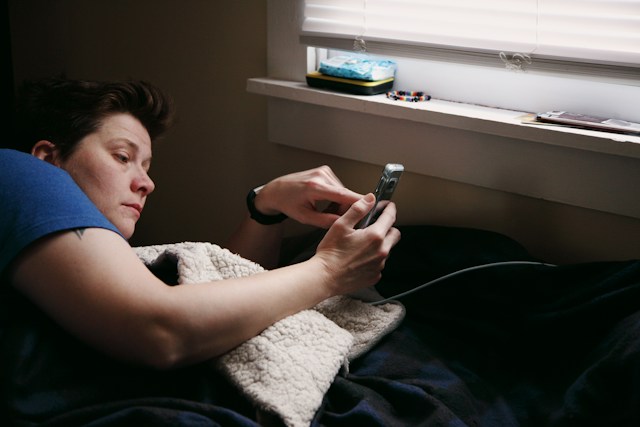In an era where digital devices are an integral part of our daily lives, striking a balance between screen time and family life has become a challenge for many. The allure of smartphones, tablets, and computers is undeniable, but so is the importance of interpersonal connections and physical activities, especially for families. So, keep reading to dive into practical strategies and insights for families striving to find harmony in the digital age. By fostering an environment of understanding, moderation, and mutual respect, families can enjoy the benefits of technology while nurturing strong, healthy relationships.
Table of Contents
Understanding the Impact of Excessive Screen Time
The first step in balancing screen time is recognizing its impact on family life. Excessive screen time can lead to a range of issues, from diminished family interactions to disrupted sleep patterns. It’s important to understand that while technology is a valuable tool for education and communication, it should not dominate our time and attention. Families can start by setting designated ‘no-screen’ times, such as during meals or specific family activities, to encourage conversation and bonding. This approach helps in instilling a sense of discipline and prioritization, emphasizing the importance of personal interactions over digital engagements.
Embracing Activities Beyond the Screen
One of the most effective ways to balance screen time is to actively engage in activities that don’t involve digital devices. This can range from outdoor sports and hobbies to creative pursuits like painting or playing music. Such activities not only provide a healthy break from screens but also foster family bonding and personal development. Moreover, the mental health benefits of owning a pet cannot be overstated in this context. Pets encourage outdoor activities, provide emotional support, and promote a routine that can counterbalance the sedentary and isolated nature of screen time. Engaging in these shared activities strengthens family bonds and encourages a lifestyle that values diverse experiences beyond the digital world.
Creating a Family Media Plan
A family media plan is a collaborative way to manage screen time effectively. This plan involves setting clear guidelines on when, where, and how long family members can use their devices. It’s crucial that this plan is developed together, with input from all family members, to ensure buy-in and mutual understanding. The plan might include specific times for checking emails or social media, limits on video game hours, and a curfew for all digital devices. By having a structured approach, families can avoid the pitfalls of excessive screen time while still enjoying the benefits of digital media. This approach also teaches children self-regulation and responsibility regarding their media consumption, skills that are invaluable in today’s digital landscape.
Addressing Digital Overuse and Behavioral Issues

While technology can be a wonderful tool for learning and entertainment, it’s vital to recognize the signs of overuse, especially in teens. Prolonged screen time can sometimes lead to behavioral issues, including irritability, lack of focus, and social withdrawal. It’s crucial for parents to be vigilant and responsive to these changes. In some cases, excessive use of digital devices can exacerbate teen ODD (Oppositional Defiant Disorder). Teen ODD symptoms include frequent temper tantrums, argumentative behavior, and defiance. If you notice such symptoms, it’s important to seek professional advice and consider reducing screen time as part of a broader behavioral management strategy. Encouraging open discussions about online experiences and setting consistent, reasonable boundaries can help mitigate these risks and foster a healthier relationship with technology.
The Role of Technology in Education
Technology plays a significant role in education today, and it’s important to harness its benefits wisely. Parents can guide their children in using technology as a tool for learning rather than just entertainment. This involves selecting educational apps and websites, setting aside specific times for online learning, and monitoring the content to ensure it’s appropriate and beneficial. Encouraging children to use technology for creative projects and research and to develop new skills can transform screen time into a productive educational experience. This approach not only enhances learning but also teaches children to use technology responsibly and purposefully.
Staying Connected in the Digital World
Finally, it’s essential to acknowledge that in the digital age, technology can be a powerful tool for staying connected with family and friends, especially those who are far away. Video calls, social media, and messaging apps can help maintain these important relationships. The key is to use technology to enhance, not replace, face-to-face interactions. Families can set an example by using technology to share moments, celebrate achievements, and stay involved in each other’s lives while still prioritizing direct personal interactions whenever possible.
Balancing screen time and family life in the digital age is a journey that requires awareness, planning, and flexibility. By understanding the impact of digital overuse, engaging in screen-free activities, creating a family media plan, addressing behavioral issues, utilizing technology for education, and staying connected, families can enjoy the benefits of the digital world without letting it overshadow the essence of family life. In this dynamic landscape, the goal is not to eliminate screen time but to integrate it into a healthy, balanced lifestyle that values personal connections, learning, and well-being.
Featured Photo by Shane on Unsplash




